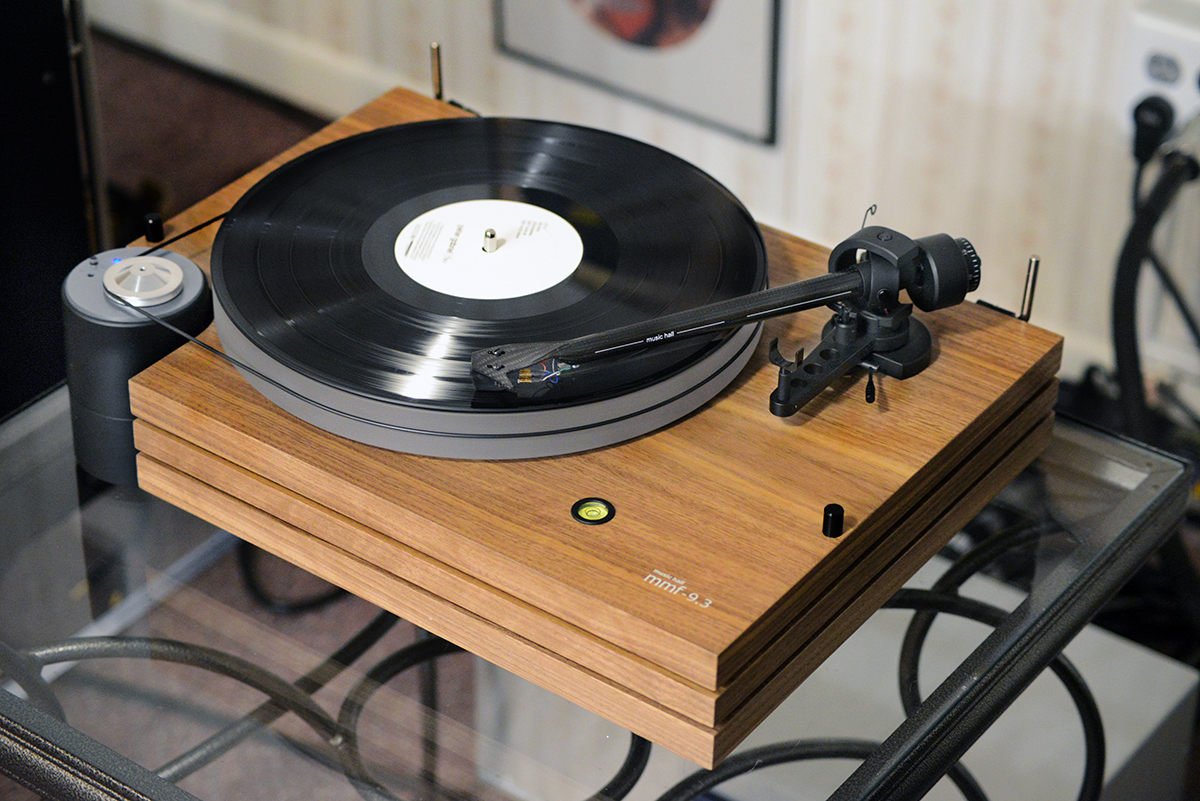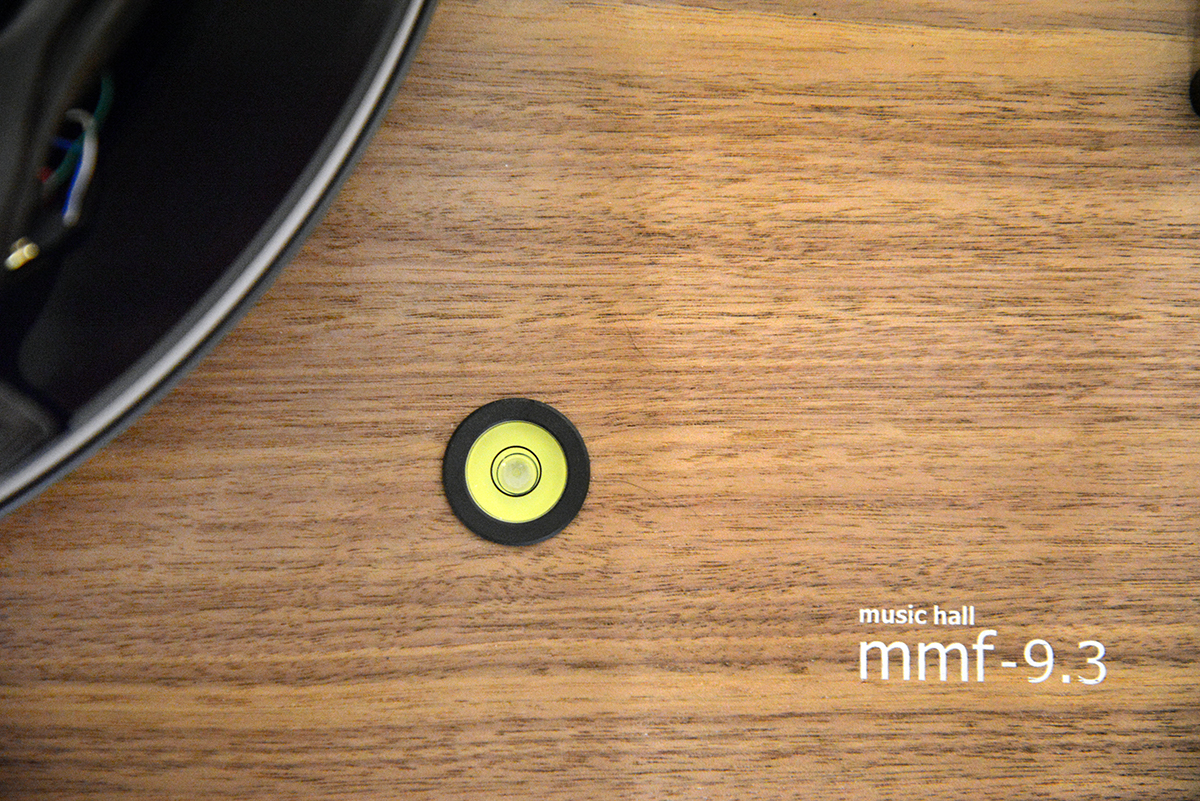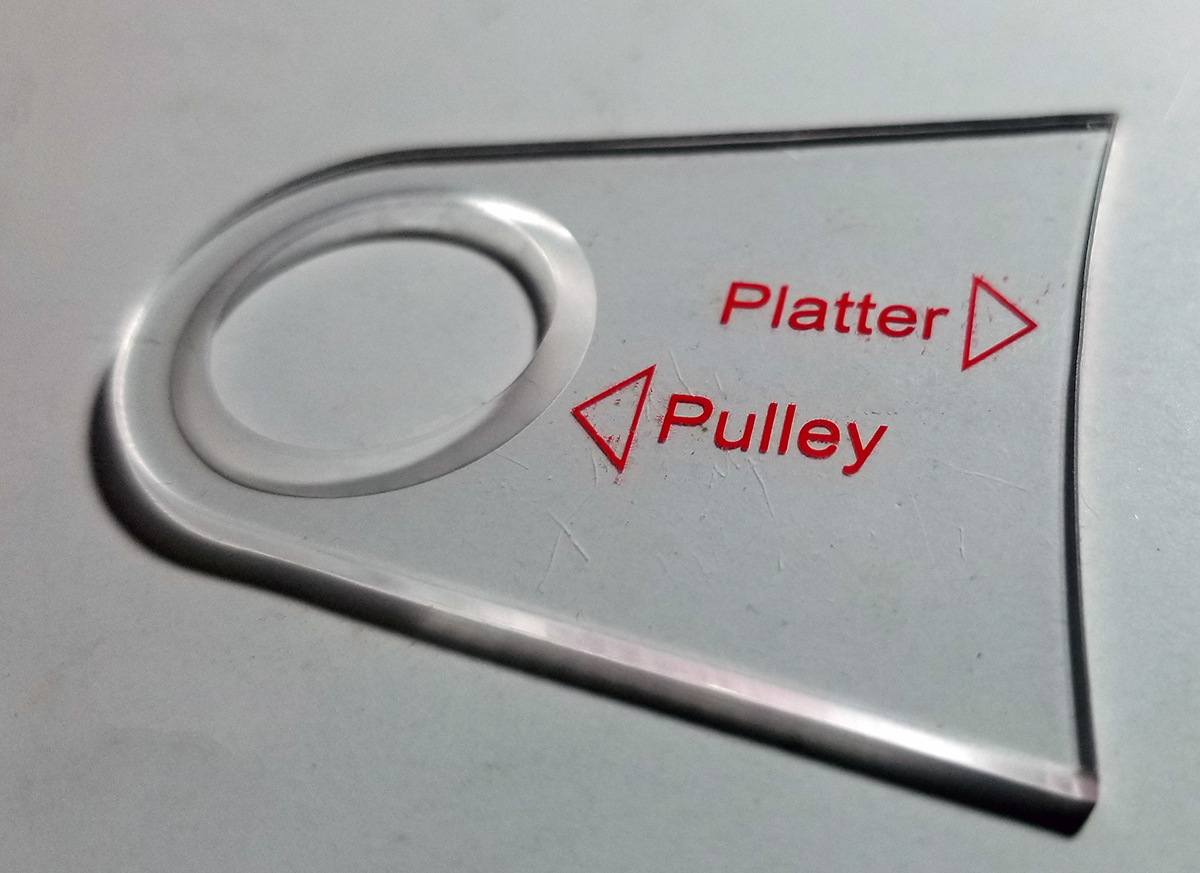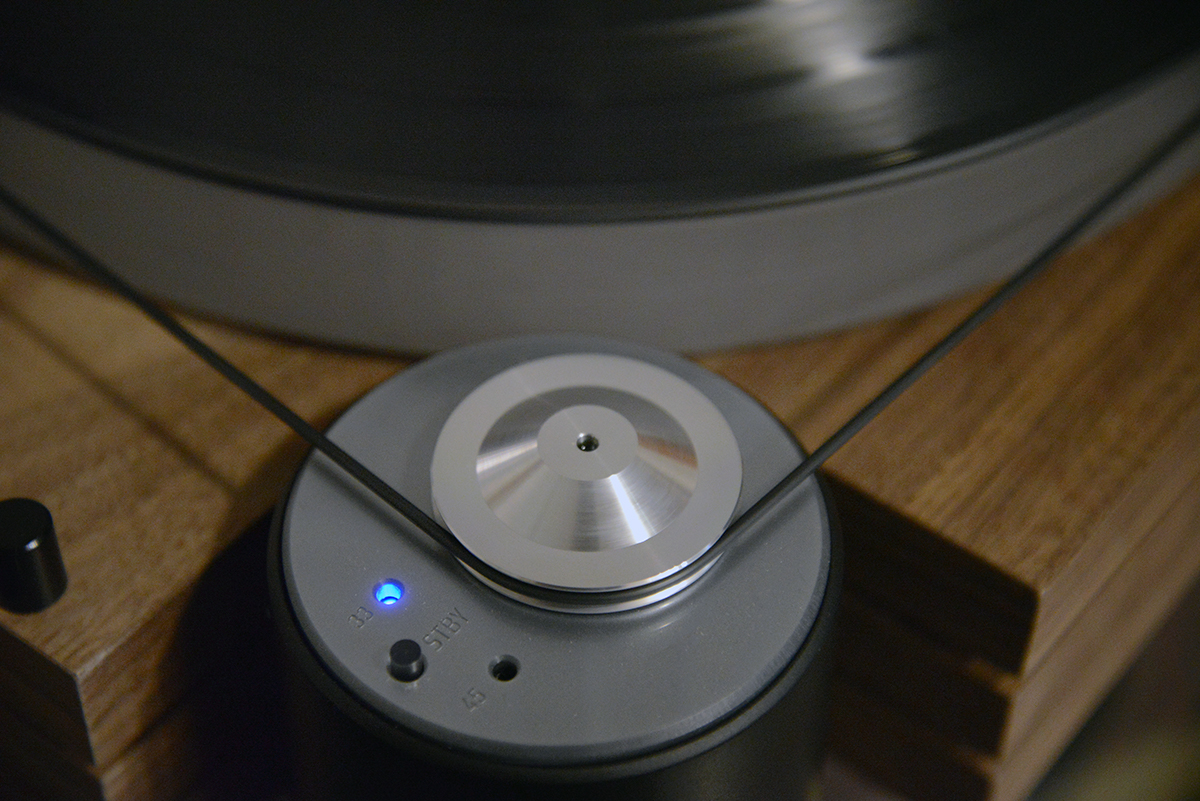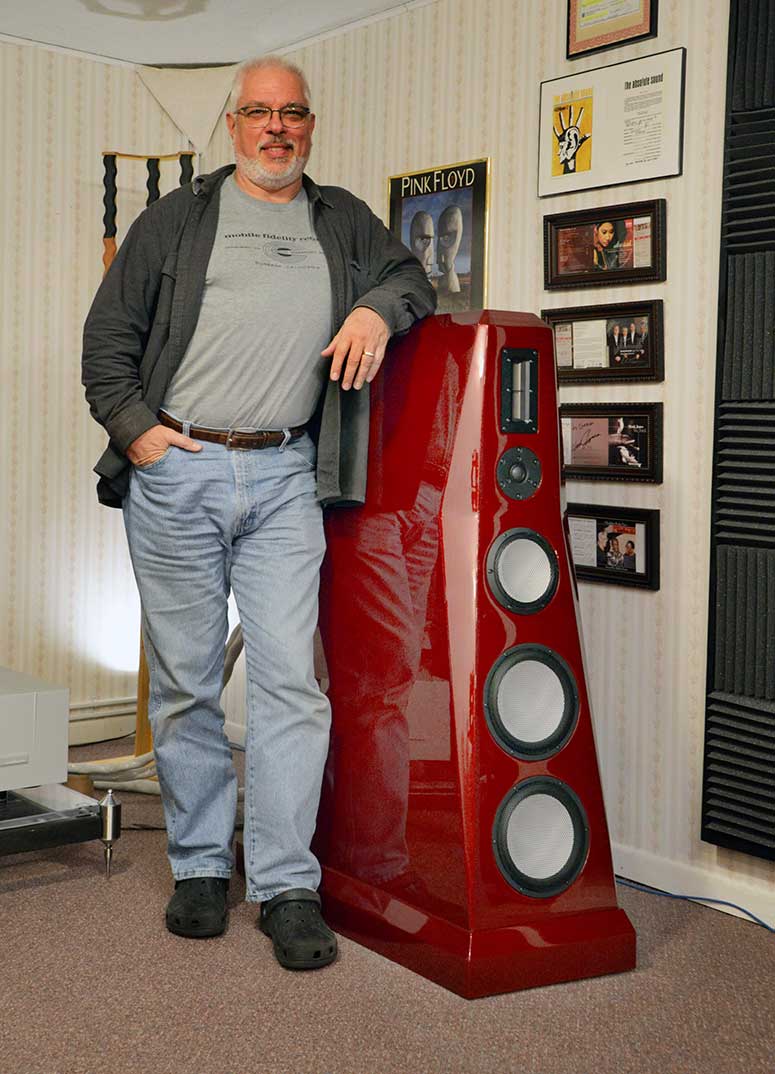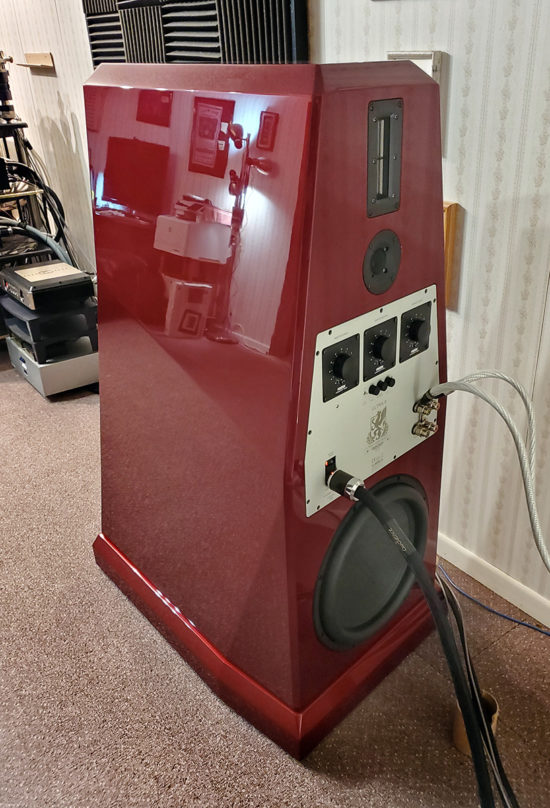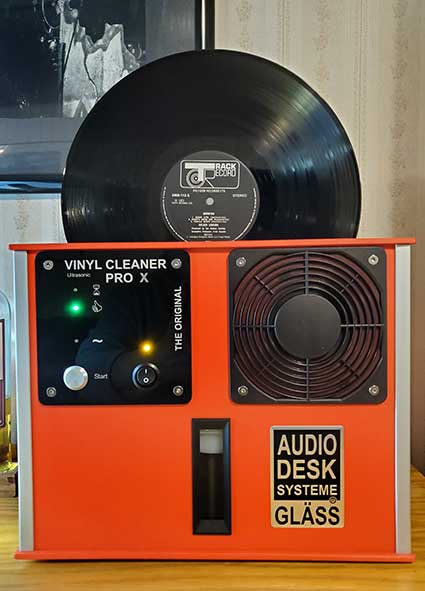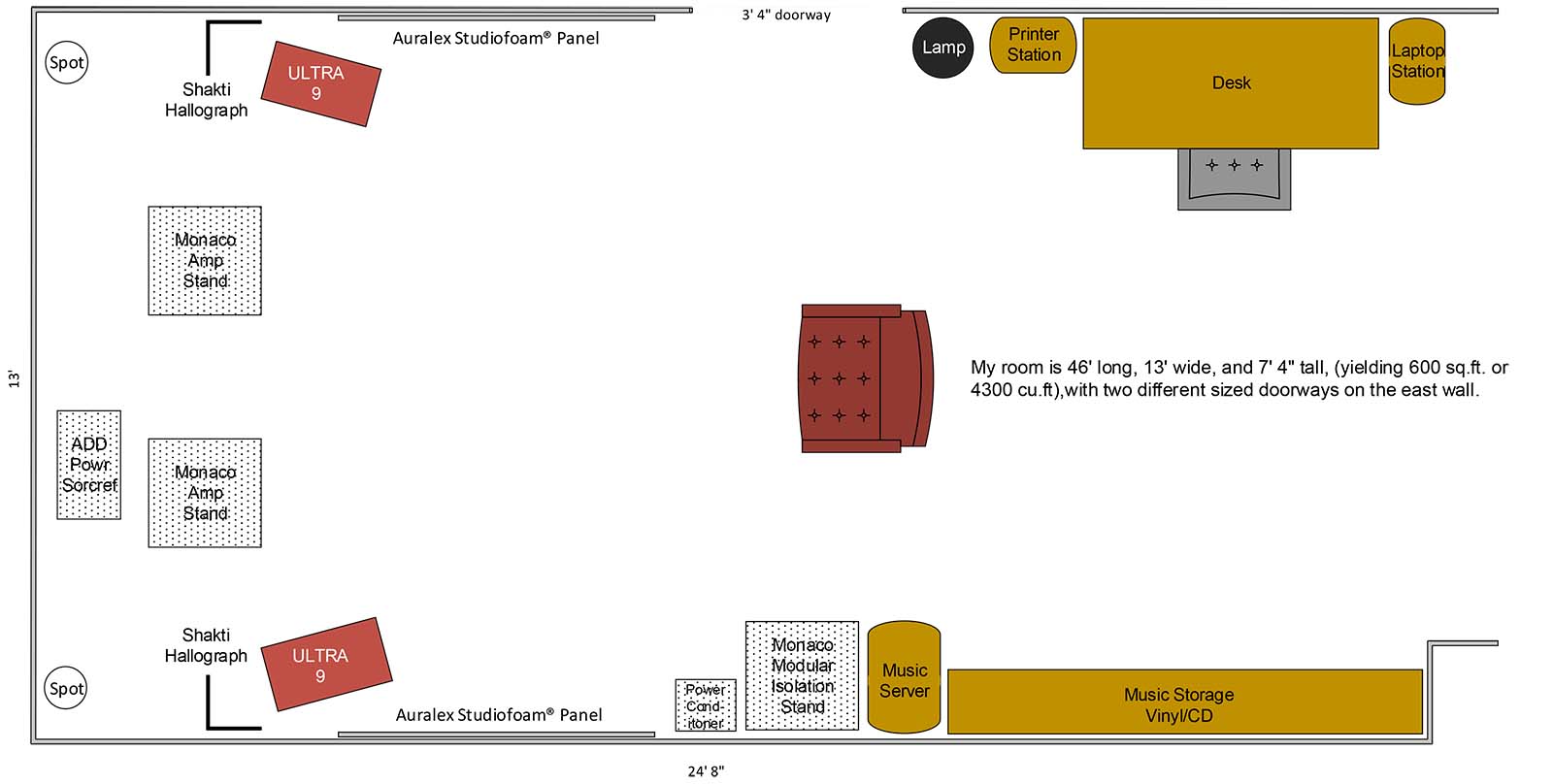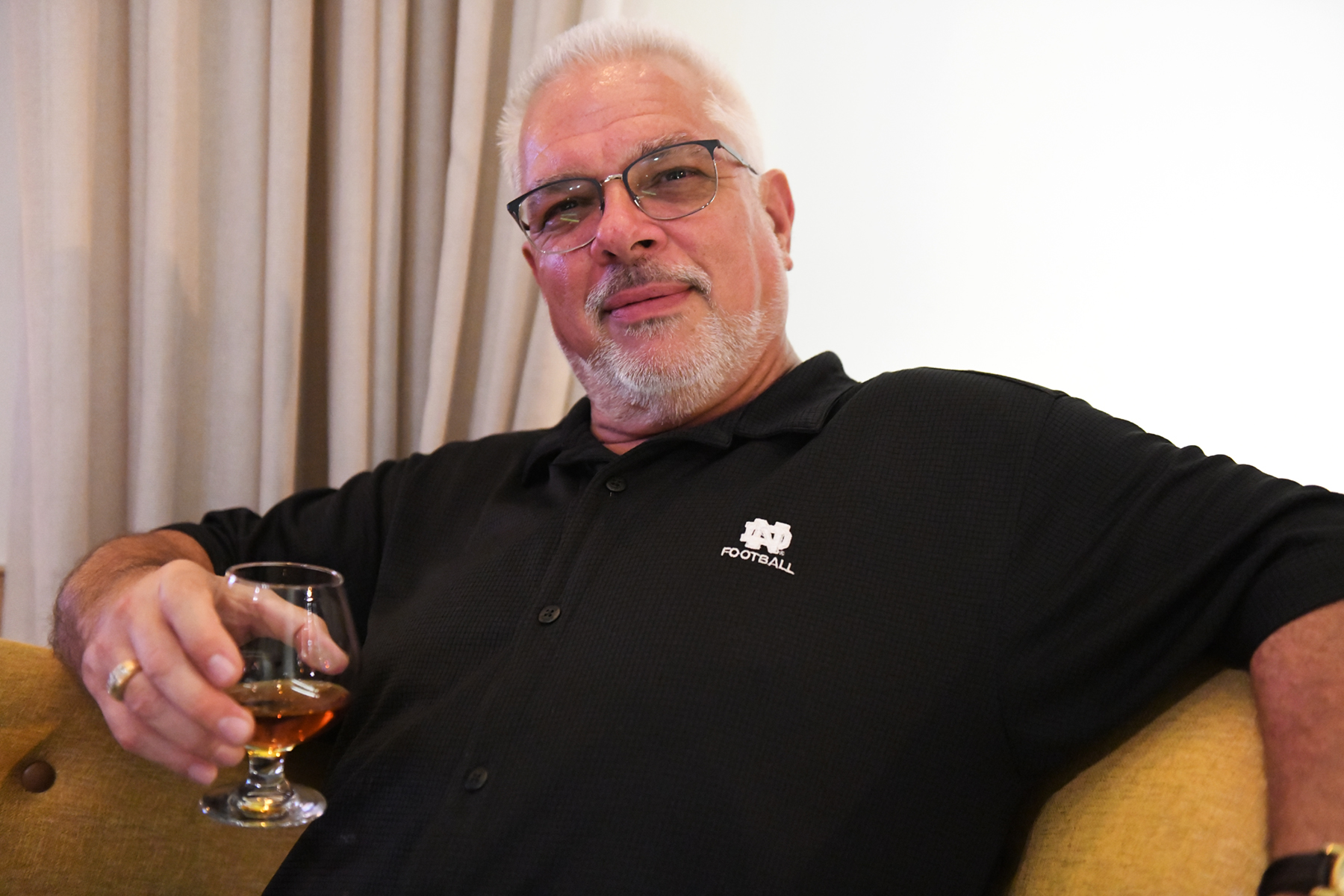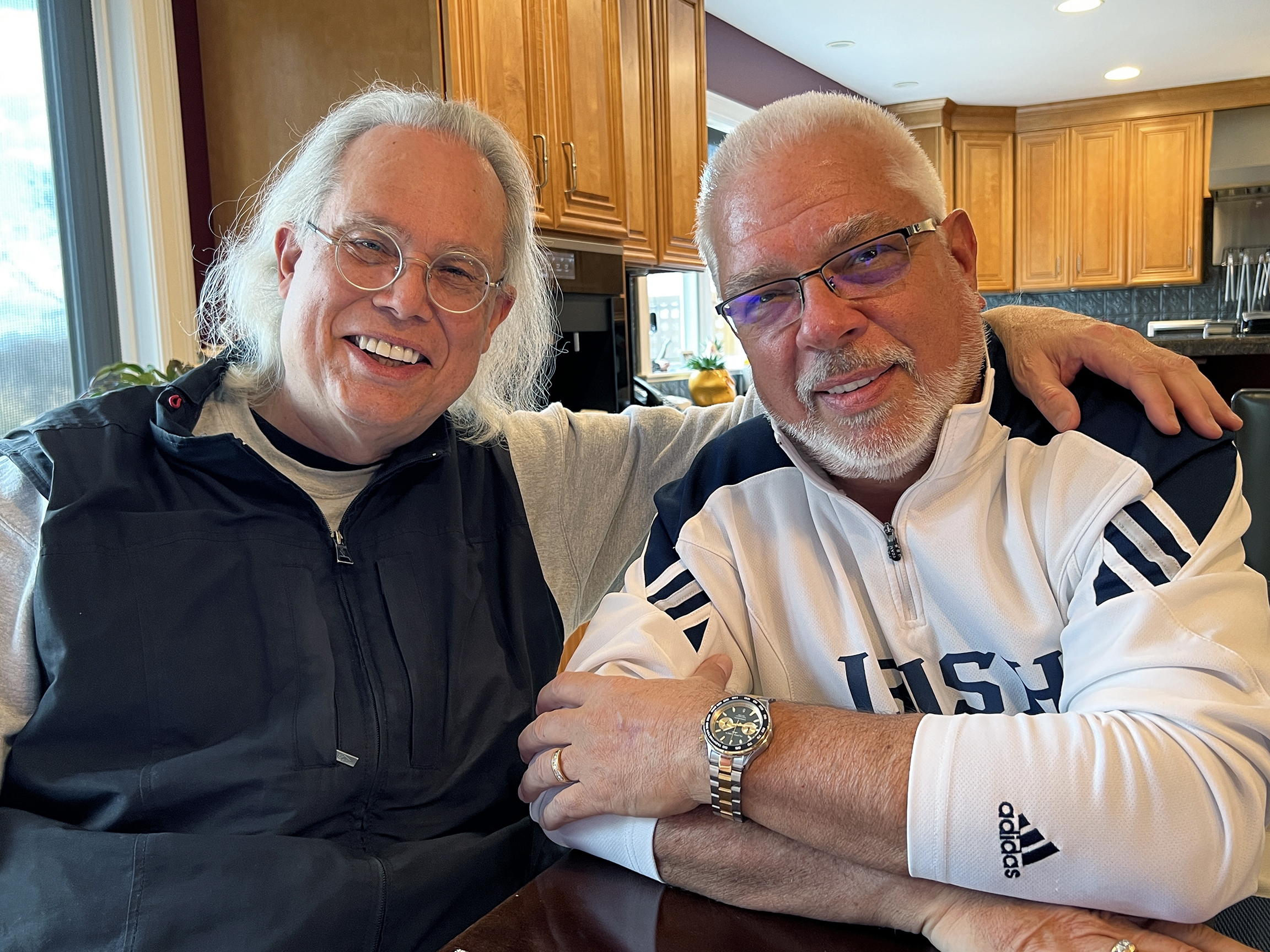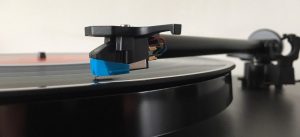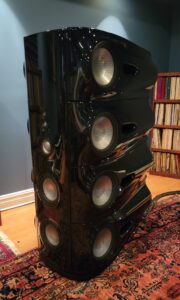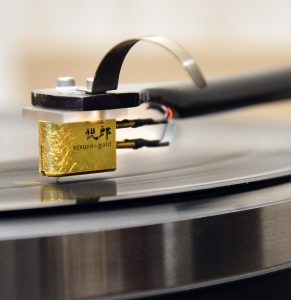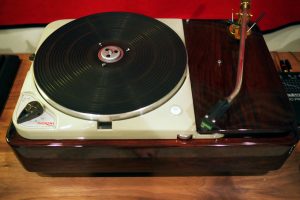If you are (or, when you were…) new to the world of "stereo gear," you're likely familiar with a well-established two-channel specialty retailer based in Great Neck, New York, Music Hall. Founded in the spring of 1985 by audio devotee Roy Hall, Music Hall started out as importer and reseller of (mostly) British audio gear, brands like Creek Audio electronics and Epos speakers.
Having been essentially a one-man operation from its inception, 1996 saw Leland Leard join "the Hall." Originally helping Roy as a "west coast" representative, it wasn't long before Leland became Music Hall's Vice President. And is was about that same time that Roy's focus began to shift to building and offering his own Music Hall branded products.
Music Hall turntables first saw the light of day in 1998, with the introduction of a simple, affordable, plug-and-play offering, the mmf-2. That lineup has now grown to include nearly a dozen different models, as well as electronics, cartridges, and accessories. From the very beginning, the turntables have been manufactured in the Czech Republic by Pro-Ject, a company that has been making turntables for over 50 years. The house branded electronics (including CD players and D/A converters, phono stages, integrated amplifiers, and receivers,) are all designed in the U.S., and assembled to Music Hall's strict specifications in China.
Honestly, I've been a fan of Roy's efforts from early on, and have reviewed three mmf turntables over the years; the original mmf-2 back in 1998 ($299 with Goldring Elan MM Cart), the mmf-5 in 2000 ($499 with Goldring 1012GX MM Cart), and the mmf-7 in 2002 ($999 with Goldring Eroica H, high output MC Cart). While speaking with Roy at RMAF, he brought up his mmf-9.3, with a beautiful walnut triple-plinth, no less! When he asked me if I'd like to take a listen, given the enormous value offered and extremely positive experiences I had from the earlier mmf tables, I didn't hesitate to accept.
Optimizing
The mmf-9.3, is a two speed, belt driven 'table using a 1" thick acrylic platter, and is the only model in the current Music Hall lineup using their triple-plinth construction. In this case, there are three identically shaped, separate layers, each just under an inch thick and finished in walnut veneer. Each layer is isolated from the one above and/or below it by strategically placed Sorbothane® hemispheres. Sorbothane® is a proprietary, viscoelastic polymer with a very high damping coefficient, combining excellent shock absorption, good memory, vibration isolation and damping characteristics, making it a nearly ideal product for such an application. By comparison, all model mmf-1 series tables use a single plinth, all model mmf-2, -3, -5, and -7 series tables use a dual-plinth, and the flagship table, the mmf-11.1 uses a four-layer plinth.
The platter, main bearing, and tonearm are all mounted to the top plinth layer, while the bottom layer houses a set of three threaded, adjustable conical feet (complete with anti-scratch cups) and the gold-plated single-ended stereo output jacks. The logic of using only three isolation cones as footers is remarkably sound, pun intended. Euclidian geometry teaches us that while two points are necessary to describe a line, only three are necessary to describe a plane, with more than three being superfluous. In fact, with four, one of the four will almost certainly be "floating" off the surface under the device being supported by the first three. From an isolation standpoint, I wish more manufacturers would employ only a troika of isolation feet, as such an arrangement allows for the more stable support of any component. Kudos to Music Hall for adopting this stance.
There is a built-in round bubble level near the Music Hall branding in the front right corner of the top plinth, and it comes with a transparent dust cover, a 45 RPM spindle adapter, and a premium detachable phono cable with separate ground connection.
The arm employed is the remarkably well thought-out and executed Pro-Ject 9cc, built to fit turntables (or arm boards) with mounting holes following the Linn standard. The headshell and straight conical arm tube are fashioned from a single piece of carbon-fiber, with high-purity copper internal wiring running from the headshell cartridge pins all the way through to through to the gold-plated RCA sockets. The main bearing is an inverted ceramic design using four ABEC7 (Annular Bearing Engineering Committee, level 7) spec'd ball-races in a solid ring housing. The counterweight shaft has been lowered to be parallel with the record to minimize cantilever forces, its solid arm base facilitates VTA adjustment, and the arm tube can be easily rotated for azimuth adjustments. Finally, the arm lift tube is silicone-damped and can be adjusted to suit arm height. As much as I like this arm and its overall performance, the native "finger lift" is just too small in my opinion. It is challenging to grip or lift. As such, you should ALWAYS mute your preamp and/or phono stage before manually cueing LPs!
This arm is available separately from Pro-Ject for $770. As a point of interest, Pro-Ject has released the 9cc EVO (Evolution), an upgrade to the base 9cc. The EVO version offers a slightly differently shaped headshell, adds a larger, more massive external outside arm bearing ring, a Sorbothane®-damped counterweight, and a more versatile cable connection schema, all of which add over $600 to the selling price! While it is likely noticeably superior sonically, I think the selection of the base 9cc was a much more cost effective and overall synergistic choice.
The included cartridge is the Goldring Eroica LX ($795), an overachieving low-output (0.5 mV) moving coil cartridge, which is mounted and aligned prior to shipping. Featuring an advanced pole shoe design, with a shortened magnetic path, a powerful Neodymium magnet, a rigid Pocan body, its stylus uses a Gyger II line contact profile.
The motor and 2-speed controller are housed in a free-standing cylindrical tower, further isolated from the surface it sits on by its own vibration damping base. It uses quartz-lock technology and a DC-driven power supply. The top of the pod has three buttons, On/Off at center left, 33 1/3 RPM above it, and 45 RPM below. The buttons offer a nice touch, pulsing with blue illumination at start up until the speed has stabilized, which they indicate by switching from pulsing to solid blue. A quick look at Pro-Ject's current lineup would seem to reveal that this is the same motor used on the Pro-Ject XPM 9 Carbon turntable, which, while it uses the 9cc EVO arm, sells without a cartridge for about the same price as the mmf-9.3 walnut WITH the included Goldring Eroica LX cartridge.
The separate motor pillar is easily set up and properly aligned using the supplied plastic guide, or jig. Once you have it positioned in its cut-out in the front left corner of the plinth, have plugged in its DC supply, and have installed the belt around the outer rim of the platter and the pulley groove, final positioning is accurately assured using that guide, which fits snugly on the top of the belt pulley. Moving the motor pillar around until the guide aligns perfectly with the edge of the platter guarantees proper tension for the best drive traction and belt life.
After the table was leveled, and the motor aligned, the final steps to complete setup were simple. I removed the transparent stylus guard, spun the counterweight onto the back of the arm, adjusted it to zero bias (so that it floated perfectly level when at rest), dialed in the counterweight to the recommended tracking weight (1.7g) using the calibrated dial, then attached the anti-skate weight and threaded it through its standoff. Time to light this puppy up!
Musicality
I have to say that my first impression of the mmf-9.3, based solely on its appearance, was more than just slightly favorable. In fact, EVERYONE to visit my music room during its stay commented on its alluring appearance, all taken as much as I was by its overall elegant design and the gorgeous natural walnut plinth. And sonically (keep in mind, this entire system had been fully run in before arrival), this synergy of Music Hall's platform, the Pro-Ject 9cc arm and XPM motor, and the Goldring Eroica XL was a remarkably expressive and musical combination.
In fairness, as good as it sounded with its pre-configured settings, because it had been set up and used by another reviewer prior to its arrival at the audio analyst© central, I decided to take some measurements and ended up making some small tweaks to the existing setup.
This table almost begs to be compared and contrasted with the original Pro-Ject XPM 9 Carbon, given that it utilizes the same motor and arm. Though I did not have one on hand for direct comparison, I have heard the original XPM 9 Carbon under both show conditions and in private installations.
One of the first things I noted with the Music Hall was how full-bodied and complete images and tonality were recreated by comparison. Where the XPM 9 Carbon comes across as highly detailed, it offers an almost "skeletal" portrayal of instrumental images throughout the soundstage, and a slightly leaner sense of texture and color. The mmf-9.3/Eroica LX combo presents a sonic tapestry with a more fleshed out sense of body and tone. We were off to a splendid start.
Because of its relatively high density and low stiffness, its acrylic platter helps minimize unwanted vibrational energy that would otherwise steal its way back into playback. Acrylic platters typically offer improved detail and clarity from your records. However, if you prefer a warmer, more relaxed, laid back presentation, drop the included felt mat on top, but be sure to recheck and adjust VTA accordingly. Final adjustment should be done by ear...and you should settle on an angel where the upper midrange and the imaging "lock in," where the sound provides maximum depth with minimum surface noise, and you are rewarded with the most musically natural combination of detail and "sweetness."
Staging was wide, deep and tall, without being exaggerated, and was especially effective at recovering spatial information accurately in both location and size. With Supertramp's "Dreamer" from Crime of the Century (MFQR 1-005), the voices questioning "Can you do something…" that repeatedly bounce back and forth between stage left and stage right, were accurately recreated just outside the left and right physical location of the speakers, were rendered with an unquestionably corporal sense of form, and were rock solid in their location—with no wander or deviation in pitch. The children's laughter at the end of the intro to "School" is placed well behind my back wall and is recreated with a both a specificity and solidity that fosters the sense of bodies in real space. This all speaks to the mmf-9.3's remarkable speed stability and pitch accuracy.
Bass is very well rendered overall. Listening to "L'Daddy," from the age-old standard James Newton Howard and Friends (Sheffield Lab 23), the attack and punch of the snare drum are explosive and fast, almost leaving a welt on your chest from the visceral wallop it generates. With cuts like "Witness" and "Black & White" from Sarah MacLaughlin's Surfacing (Classic Records RTH-18970), percussion instruments are both well-defined and detailed, again with remarkably accurate pitch definition and impact.
Midrange performance may just be the mmf-9.3's greatest gift. Staying with Surfacing, Sarah's charming and evocative voice is remarkably portrayed, with engagingly accurate tone and texture. The bow being drawn across the strings of the upright bass on "Last Dance" demonstrates the authentic balance between the bloom of its wooden body, the "rasp" of the bow across the stings, and the resultant excitation of the strings one hears live. Very engaging.
And listening to the chillingly powerful expressiveness of David Bowie's vocals on Cat People (Putting Out Fire), from the 1982 12", 45 RPM Single (MCA Records - MCAT 770) further exemplified the mmf-9.3's ability to portray the emotion and expressiveness of such a remarkable recording. This midrange prowess proved remarkably consistent over the course of my audition period, and when combined with its ability to convincingly reconstruct the space of, and around, instruments, it imbues this 'table/arm/cart combo with a captivating ability to recreate a genuine sense of presence and bloom.
Beethoven's Piano Sonata No.23 in F Minor, Op.57 "Appassionata," (RCA - RDC-4), a 45 RPM piano tour de force, with Ikuyo Kamiya marshaling a Bösendorfer imperial Concert Grand piano to life is an unforgiving test, one that distresses many excellent analog playback systems. Any hint of pitch instability, dynamic limitation, both macro or micro, or tracking issues, are ruthlessly exposed immediately. The mmf-9.3/Eroica LX combo scaled this audio obstacle course with an amazing sense of grace and ease, yielding an exceptional result. There was just the slightest hint of congestion at a few of the most dynamic and exacting passages, but overall, the scale, size, and power of this recording were very well recreated.
Moving to the title cut from the 2007 Cisco Music reissue of Steely Dan's Aja (CLP-1006), the studio acoustic was recreated wall to wall in my listening room. Queuing up "Black Cow" or the title track, and you can easily denote the shimmer and detail of the cymbals. You are readily able to discern the individuality of each drumstick strike. As Paul Humphrey or Steve Gadd workout their drum kits, you are presented with the subtle differences noted as slightly harder and softer strikes are laid down, and you can readily differentiate the slightly different timbre of blows nearer or farther from the drum's rim. This is a combination of effective arm and cartridge (compliance) matching, strong speed and pitch stability, and effective isolation from the surrounding acoustic environment. The resultant excellent trackability allows for a very precise degree of detail retrieval—not a foregone conclusion at this, or even in some higher, price points.
This combo's ability to portray subtleties like the decaying quaver of the struck Glockenspiel from the Respighi Feste Romane (MFHQ 1-507), or the distinctly individual sounds of the drumheads from "Nardis" on Patricia Barber's Café Blue (Premonition Records – 737), is wonderfully exciting and completely engaging. This beautiful combo offers a consistent and uncanny ability to dig into and reveal the musical message.
Leader of the Pack?
The remarkable quietness of the mmf 9.3 walnut is undoubtedly a result of the effectiveness of Music Hall's triple plinth and the effectively isolated motor. This lowered noise floor really lets the mmf-9.3 excavate subtle microdynamic changes and retrieve inner detail with an exceptional degree of accuracy, and to a degree not necessarily common in this class. In all, this accomplished table has an infectious ability to present music amazingly realistically, with dynamic swagger as well as with body and space.
I'm very fortunate. Having spent many decades on this audio journey (I was selling audio equipment before I could legally drive a car!), my main audio rig (click on the red Greg Weaver link at the top of the page) is a world-class system, with a retail price of nearly $400,000. When my new speakers arrive (the $225,000/pr. Von Schweikert Audio ULTRA 9) in the next weeks, it will take yet another major step forward. Someone pinch me!
What this means is that I am privileged to be able to live with a nearly $70,000 analog front-end (the $21,500 Kronos Sparta turntable fitted with their $6500 Helena Tonearm, the brand new $9500 Sparta Super Capacitor Power Supply, sporting the new, world-class $20,999 Etsuro Gold MC Cartridge review HERE, and connected with the stunning $9800 Stealth Helios phono cable). As such, it is no small feat for you to understand that when I dropped this Music Hall mmf-9.3, at about 1/25th the price of my reference analog front-end, into that system, it had absolutely nothing to apologize for at its asking price. In fact, I was eerily taken with its consistent and almost effortless ability to liberate the message in the grooves
The synergy of the mmf-9.3 Walnut's remarkable quietness, balanced and natural tonality, superb resolution, expressive drive and pacing, make it an overachieving entrant in this price range. Though I've yet to hear their flagship offering, the mmf-11, this penultimate offering from Music Hall, especially in this beautiful walnut finish, offers an incredible combination of exhilarating performance, strikingly good classic aesthetics, and most importantly, exceptional value. While there is quite a bit of competition in this class, the Music Hall mmf-9.3 distinguishes itself as a top performer, one that most LP lovers will find remarkable enough to be their "forever" turntable! Most highly recommended.
mmf-9.3 Walnut Turntable with Goldring Eroica LX MC Cartridge
Package Retail: $2695
Music Hall
108 Station Road
Great Neck, NY 11023
516.487.3663
https://musichallaudio.com/product/mmf-9-3-walnut-turntable/
Music Hall mmf-9.3 Walnut Turntable
- Speeds: 33 1⁄3 & 45 rpm electronic speed change
- Wow and flutter: ± 0.10 %
- Speed deviation: ± 0.06%
- Rumble max: > – 73 dB
- Effective tonearm length: 9 in. (230 mm)
- Tonearm weight: 250 g (without counterweight)
- Effective tonearm mass: 8.5 g
- Overhang: 18 mm
- Dimensions: 18.25″w x 13.25″d x 7.25″h
- Weight: 40 lbs. pkg.
Goldring Eroica LX MC Cartridge
- Frequency Response: 20 Hz – 22 kHz 2 dB
- Channel Balance: within 1 dB @ 1 kHz
- Channel Separation: better than 25 dB @ 1 kHz
- Sensitivity: 0.5mV 1dB, 1kHz @ 5 cm/sec
- Static Compliance: 30 mm/N
- Dynamic Compliance @ 10 Hz: 18 mm/N
- Equivalent tip mass: 0.35 mg
- Vertical Tracking Angle: 24°
- Stylus Radius: Gyger II
- Stylus Type: Non-Replaceable
- Load Resistance: 100 Ω
- Load Capacitance: 100 – 1000 pF
- Internal Inductance: 12 uH
- Internal Resistance: 8 Ω
- Cartridge Mass: 5.5 g
- Tracking Weight: 1.5 – 2.0 g (1.7 g nom.)




